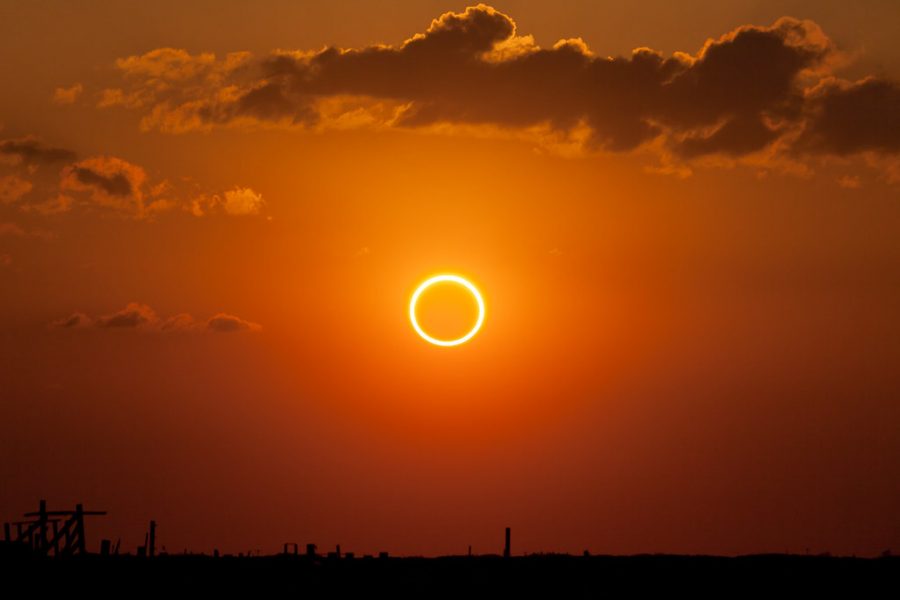Solar Eclipse: What Is It?
Source: Kevin Baird
“Perfect Ring of Fire – Annular Solar Eclipse” by Kevin Baird is licensed with CC BY-NC-ND 2.0. To view a copy of this license, visit https://creativecommons.org/licenses/by-nc-nd/2.0/
What is a Solar Eclipse?
A solar eclipse is when the Moon is blocking the Sun, causing some parts of Earth to go dark. Solar eclipses can last multiple hours and totality can last up to 7.5 minutes. Solar Eclipses occur 2-4 times per year. During a solar eclipse, the Moon will create a “Penumbra” shadow and an “Umbra shadow” for total eclipses. The Umbra shadow is where the darkest shadows of the eclipse are, and the Penumbra shadow is the shadow surrounding the Umbra shadow.
Types Of Solar Eclipses
There are four different types of solar eclipses. These types of eclipses are total, partial, annual, and hybrid eclipses. A total eclipse is when the Moon fully covers the Sun, creating a specific path on the Earth where it experiences total darkness as if it was night. A partial eclipse is when the Moon is partially covering the Sun. An annular eclipse, also known as a “ring of fire,” happens when the Moon is too small to create a total eclipse because it is too far away. Lastly, and most rarely, is a hybrid eclipse. A hybrid eclipse can be either a total or annular eclipse, depending on where you’re looking at. During a hybrid eclipse, an “antumbra” shadow will appear, and when in this shadow, the Sun will look larger than the Moon, making an annular eclipse.
History And The Next Solar Eclipse
The next Solar eclipse is June 10, 2021, and is an Annular eclipse. The eclipse will start around the north of the Great Lakes and will curve around Greenland and end east of Russia.
RELATED ARTICLES:











